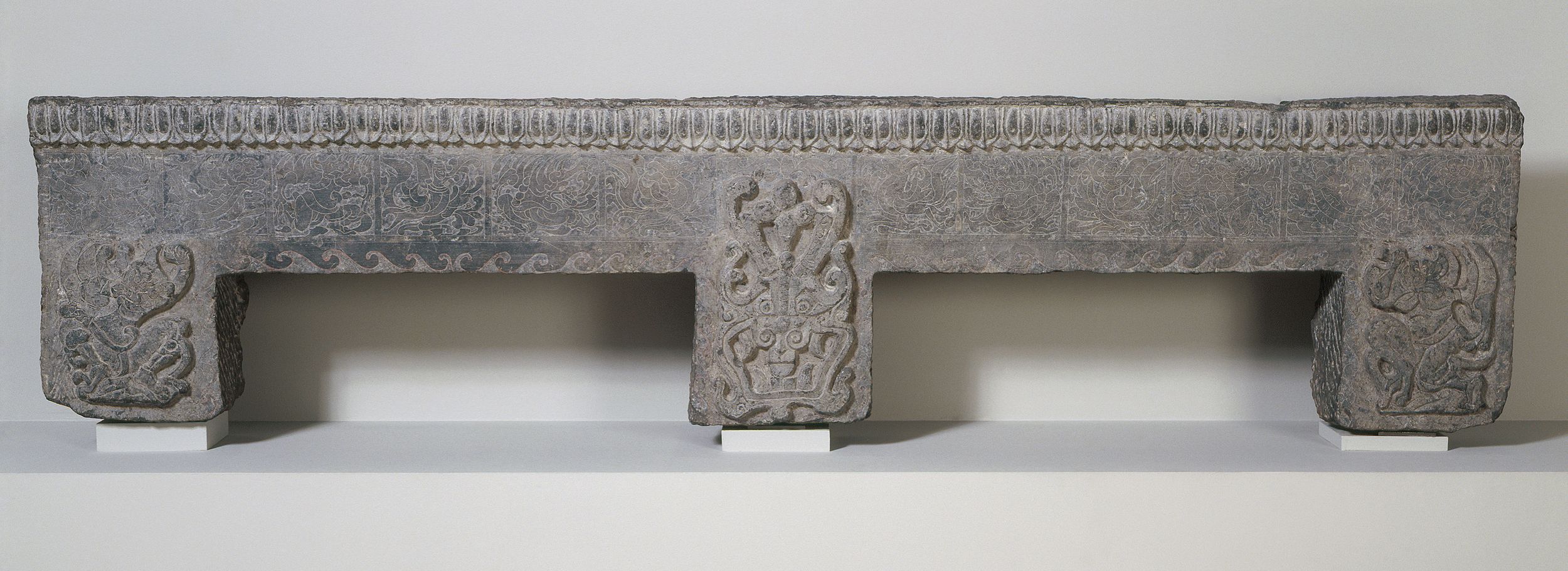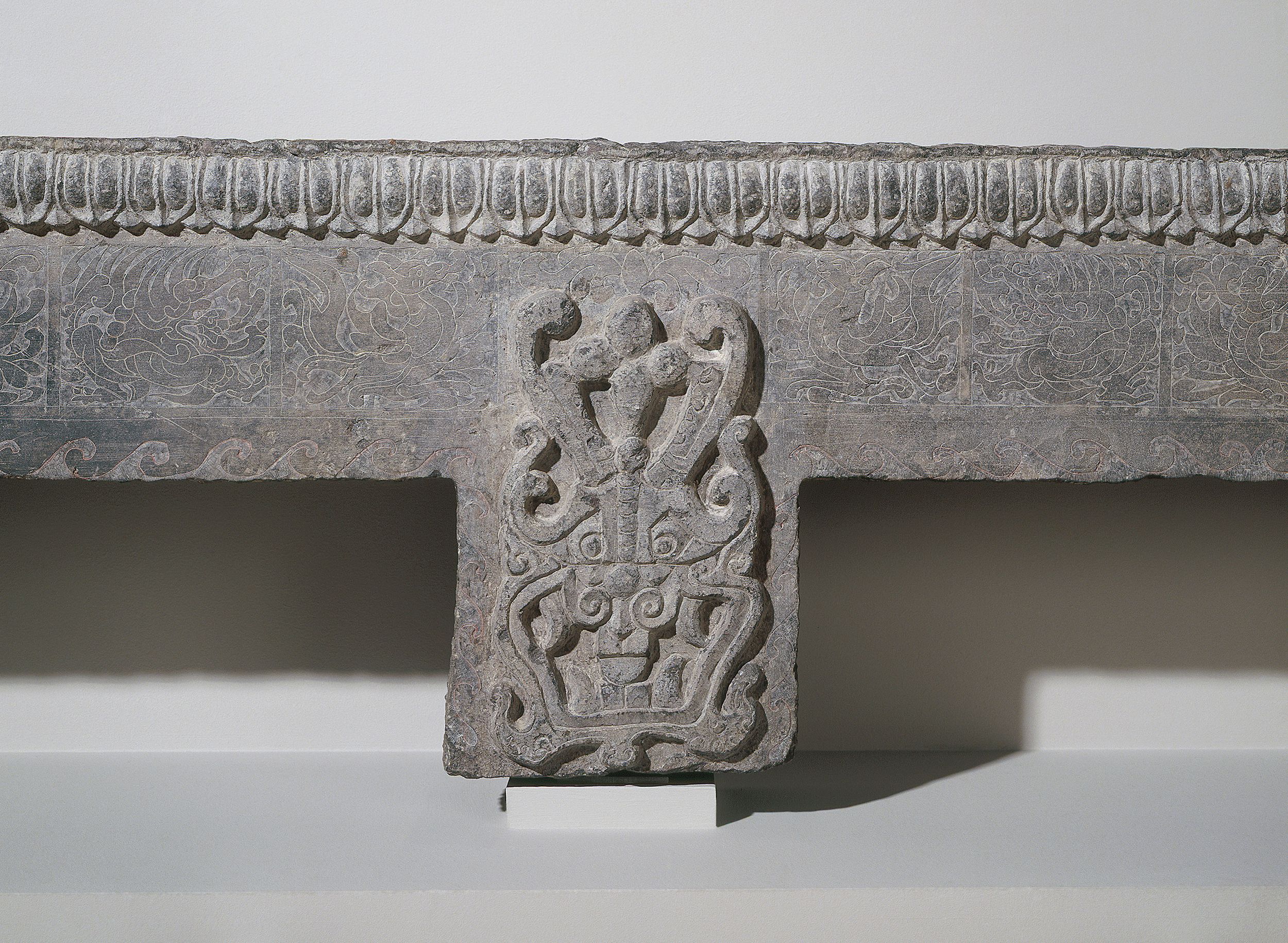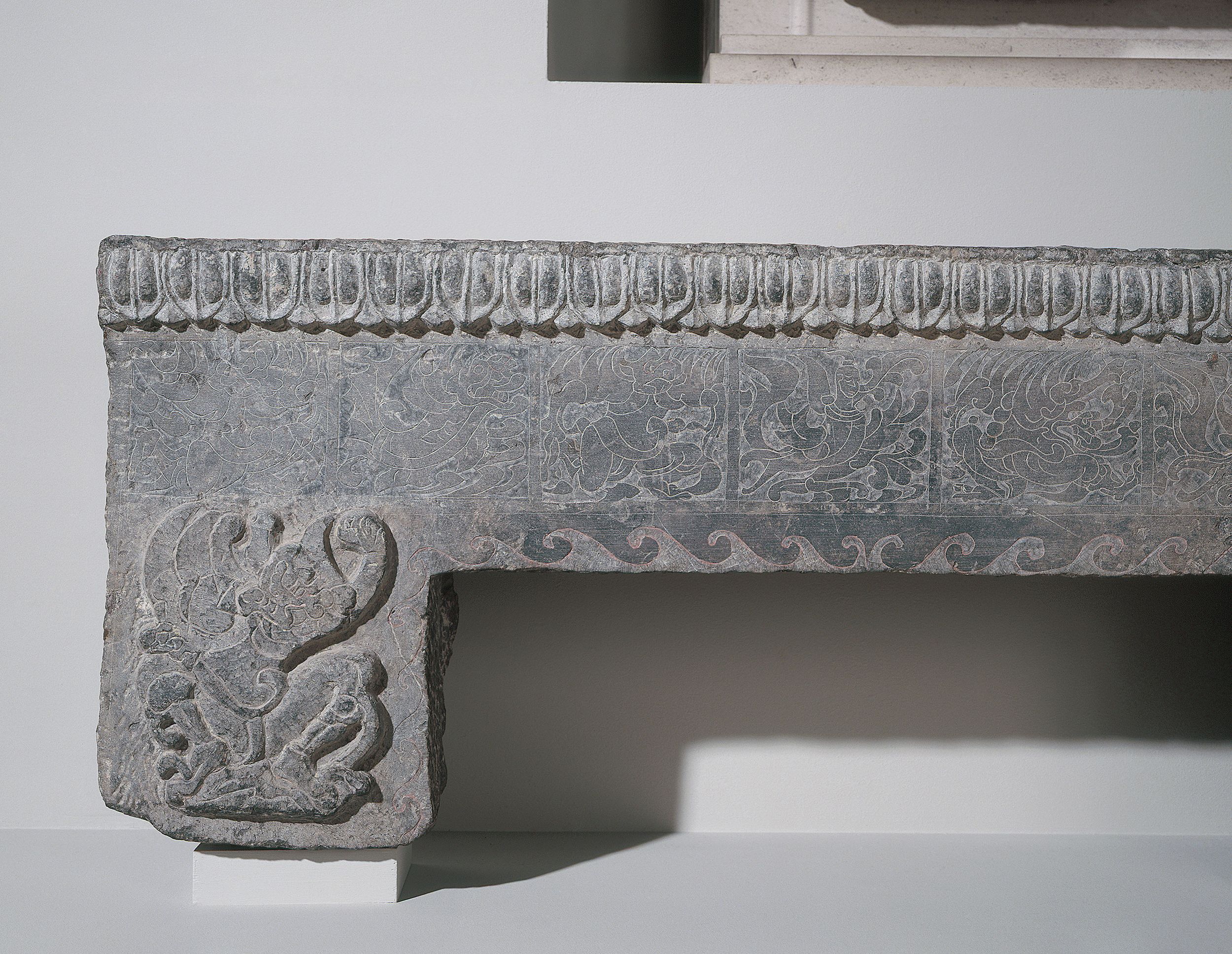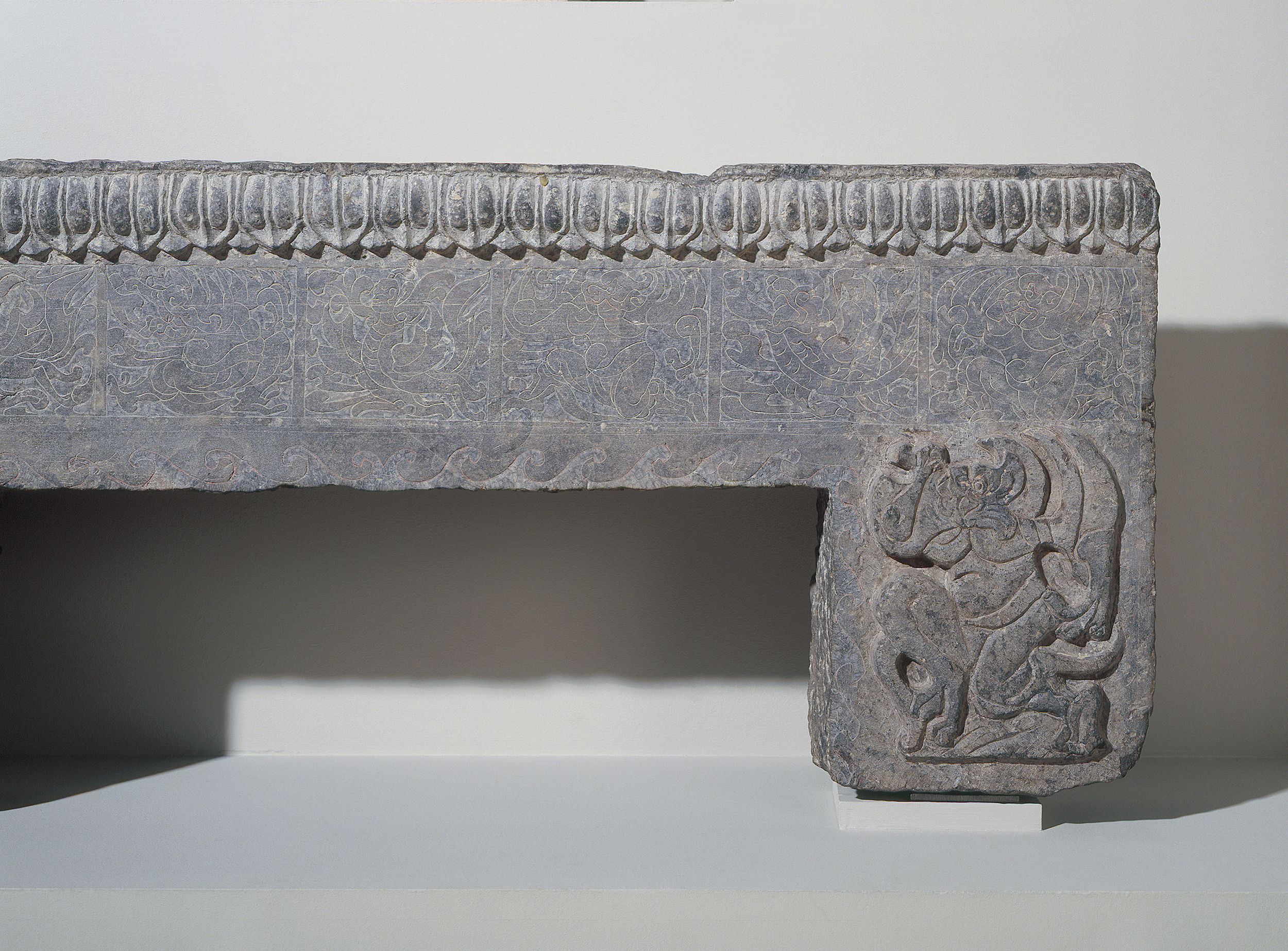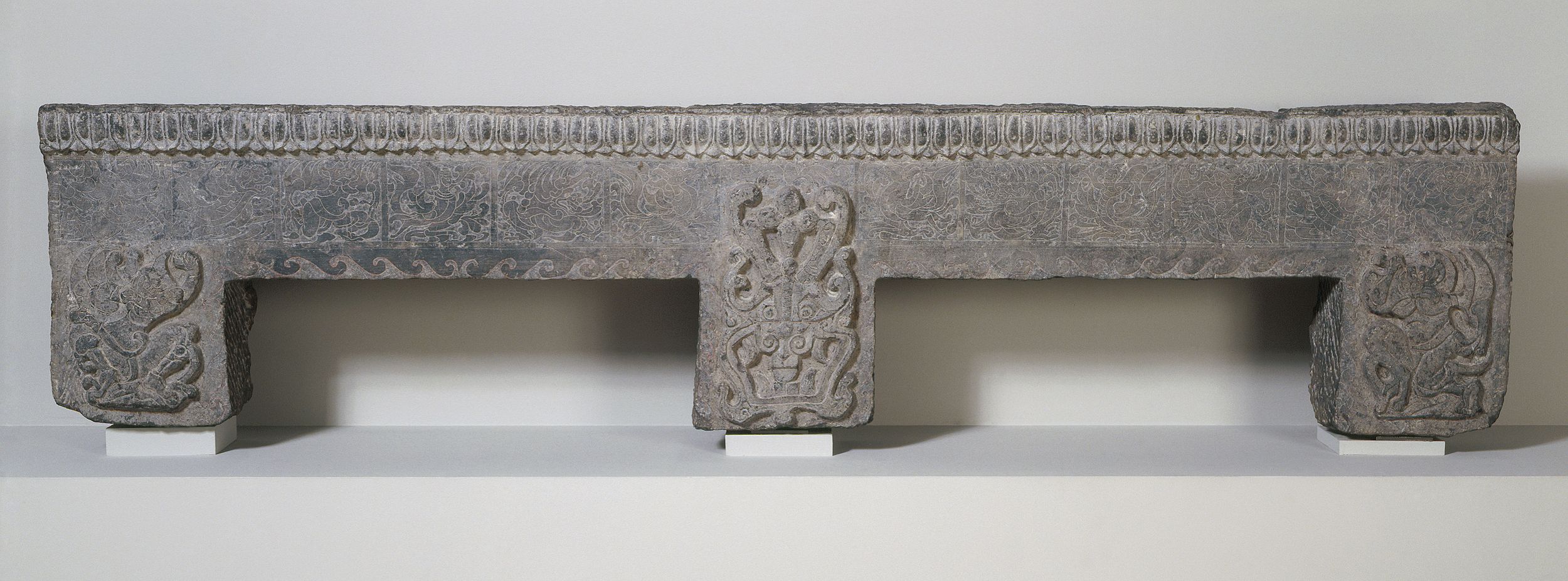
Catafalque
Pierre
Meuble funéraire
H. 45 x L. 212 x P. 15 cm
M.C. 9946
Don manuel, Beurdeley, Jean-Michel
Musée Cernuschi - 4ème niveau (1er étage), escalier monumental, entre les deux piliers, vers le sud, côté est
Although the Chinese use the character gang, “bed”, to designate this type of object, these bases, placed in the deepest chamber of the tomb, supported in the manner of a catafalque (ta) the sarcophagus of the deceased and various funerary furnishings. The ta was made up of a long “lintel” of stone supported by three wide square feet.
All these ta, with the exception of those in Toronto, Cleveland and Brussels, have identical, if more or less explicit, iconography. The central foot is decorated with a grimacing prophylactic mask. This monster either features an ornamental stylisation, harking back to the taotie motif in the ancient Chinese decorative vocabulary, or a more pronounced animality. The mask on the Cernuschi Museum gang, so deformed that it is almost unrecognisable, belongs to the first group.
The side feet feature winged spirits with wrathful expressions. Below these winged and leaping spirits, feline creatures, also winged, advance threateningly. One of these fantastical creatures sticking out its tongue is called Changshe, “Long tongue”. Two others, with prominent teeth, have been identified as pidian, “flashes of light”.
The decoration of the upper part of the lintels is enigmatic. These friezes are adorned with fantastical animals, mostly incised and difficult to identify, grouped sometimes in repetitive sequences and sometimes arranged in mirror symmetry. There are dragons and birds in both works, but it is hard to identify the mythical creatures on the lintel of the Cernuschi Museum gang. These winged monsters make up two series of six, arranged symmetrically in relation to the centre.
All these gang have another iconographical element. The lower part of their lintels features the same band of stylised waves. Without an explicit Chinese text, the iconological meaning of this motif remains uncertain. That of the Cernuschi Museum still has traces of red from its former polychrome.
Gilles Béguin, Activités du musée Cernuschi, Arts asiatiques, 1998, t.53, p. 89.
Meisterwerke aus China, Korea und Japan im Museum für Ostasiatische Kunst, Köln, Osaka/Kobe, General Consulat der Bundesrepublik Deutschland, 1997, p. 13 et 123, n°13.
Annette Juliano - Judith A. Lerner, "Stone Mortuary Furnishings of Northern China in 6th Century" in Croës, 2004, p.24-56.
Hennan sheng wenhuaqu wenwu Gongzuodui, Gongxian Shiku (Les sanctuaires rupestres de Gongxian) Beijing, 1963.
Art chinois, Musée Cernuschi, acquisitions 1993-2004, Paris Musées/Editions Findakly, 2005, p.85-86-87.
